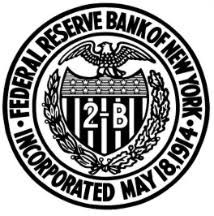Chris Westcott (July 2025)
BTRM Faculty Opinion
Reflections on a Career in Asset & Liability Management – Professor Chris Westcott, Head of BTRM Faculty

[Image, the Zimbabwean.co]
Recently, I was chatting to an ex-banking colleague who observed that the beauty of the Asset and Liability Management discipline was that nothing had materially changed over the course of our 30 plus year careers. I have been reflecting upon this statement.
Certain aspects of banking are timeless. Thanks to Moorad Choudhry’s publication ‘The Principles of Banking’ (second edition), I became aware of the work of George Rae, a manager for the District Union Bank, who wrote and published ‘The Country Banker: His Clients Cares and Work’1 in 1890. Many of the statements in the book still ring true today. Rae highlighted the need for corporate governance standards, capital as a buffer against unforeseen losses and the requirement for a reserve to provide protection against ‘deposits being subject to serious depletion and the demand for discounts and advances being subject to constant variation’. Also, the importance of a strong balance sheet was stressed.
Moving to more recent times, significant elements of liquidity, capital adequacy and interest rate risk management are fundamentally the same now as when I first began working in a bank treasury function in the 1990s.
Take for example, UK liquidity regulations, which, prior to the financial crisis, required banks to maintain a Sterling Stock Liquidity Ratio2 above 100% at all times. The Sterling Stock Liquidity ratio was calculated as the stock of sterling liquid assets divided by a measure of outflows. This measure was defined as the contracted wholesale sterling net outflow over the next 5 days minus sterling CDs held (up to 50 per cent of the wholesale sterling net outflow) plus 5 per cent of maturing retail deposits. The assumptions for wholesale and retail outflows were intended to recognise performance under stress. This is not very different to today’s Liquidity Coverage Ratio, which also compares liquid assets to expected outflows in a stress, albeit over a different time period. It also predates LCR by about 30 years!
In terms of capital adequacy, the Basel 1 Capital Accord of 19883 established the concept of risk weightings for assets and the requirement to maintain a minimum ratio of capital to Weighted Risk Assets (WRAs) of at least 8%. Since then, the range of risks captured by the calculation has increased, a variety of methods of calculating WRAs have been introduced and the definition of allowable capital instruments has changed, yet the basic approach has remained the same. Indeed, in the most recent Basel regulations, there has been a reversion to more simple methods of calculation, not quite going ‘full-circle’ but getting there!
In addition, much of the content of the 1997 Basel Principles for the Management of Interest Rate Risk4 was captured in the 2016 publication on Interest Rate Risk in the Banking Book5. Although, in the earlier text, there was no Standardised approach, interest rate shock scenarios were not specified and capital requirements were captured as part of market risk rather than being a Pillar 2 item, in many other respects you might be forgiven for confusing the two documents.
If the basic approach to the management of key balance sheet risks is the same, has anything changed?
The role of technology and AI comes immediately to mind. Many banking activities can be completed more quickly and efficiently now compared to 20 or 30 years ago. However, we remain worried about the same issues. For example, the aforementioned Basel Principles for the Management of Interest Rate Risk highlighted the need to avoid ‘black box’ techniques to produce simulations. Presumably, the same thought processes were behind the 2024 EU AI Act6 which emphasises the importance of adopting Artificial Intelligence (AI) systems with a human-centric approach to ensure their safe deployment.
How about the data that feeds the risk models? Well, this record appears to be stuck! In 2013 the Basel Committee published Principles for Effective Risk Data Aggregation and Reporting7. After initial enthusiasm, it became clear that the more banks investigated the quality of their data, the worse their self-assessments became. In the latest progress report, the proportion of banks remaining materially non-compliant increased for 6 of the 11 principles between 2019 and 2022.
Although much of the change to balance sheet risk management can be argued to be no more than building on already well-established principles, there has undoubtedly been a material expansion in balance sheet management activity and in the profile of the Treasury function.
The Treasury function has had to adapt to a multitude of new challenges, including: the recognition of additional risk items such as intraday liquidity risk, asset encumbrance, double-leverage and credit spread risk in the banking book, a greater focus on stress testing of both capital and liquidity, the introduction of recovery and resolution planning and the demands of a more active regulator. Apart from the ever-growing burden of regulatory change, which shows no signs of slowing down despite the financial crisis having occurred 17 years ago (!), the amount of regulatory reporting and risk management disclosure has also increased many times over, and there’s more intense and prescriptive supervision, especially when things start to go wrong.
Perhaps the biggest change I have experienced during my banking career, though, has been in the relative power of the Treasury function. I would contend that many of the balance sheet issues facing banks were identified and reported to senior management prior to the financial crisis, but due to a relatively weak position in the organisational hierarchy, these concerns were not acted upon. In the UK, the FSA could not bring itself to admit this in its report into ‘The Failure of Royal Bank of Scotland’8, but did ask: ‘whether RBS was overly focused on revenue, profit and earnings per share rather than on capital, liquidity and asset quality?’ Nowadays, Treasury is a respected partner at the top table influencing strategic business decisions. I may be biased, but see this as a positive outcome from the turmoil suffered in 2007-08, and believe it should lead to more balanced decision making going forward.
In summary, many of the fundamental risk management principles that guided bankers 30 or even 130 years ago, are still relevant today. However, despite the drive to improve data quality being ‘stuck in the mud’, there have been many other developments in the balance sheet management discipline. Although the regulators have been in overdrive, the growth in their activity has been matched by an expansion of bank Treasury functions and their greater involvement in the executive decision-making process. Long may it continue.
- ‘The Country Banker: His Clients Cares and Work’, George Rae, 1890 (from ‘The Principles of Banking’, Choudhry M, 2023)
- ‘Banking System Liquidity: Developments and Issues’, Chaplin G, Emblow A and Michael I, Bank of England Financial Stability Review, 2000
- ‘Convergence of Capital Measurement and Capital Standards’, Basle Committee on Banking Supervision, 1988
- ‘Principles for the Management of Interest Rate Risk’, Basel Committee for Banking Supervision, 1997
- ‘Interest Rate Risk in the Banking Book’, Basel Committee for Banking Supervision, 2016
- ‘The AI Act’, Regulation 2024/1689, European Union, 2024
- ‘Progress in Adopting the Principles for Effective Risk Data Aggregation and Risk Reporting’, Basel Committee for Banking Supervision, 2023
- ‘The Failure of the Royal Bank of Scotland’, Financial Services Authority, 2011
































